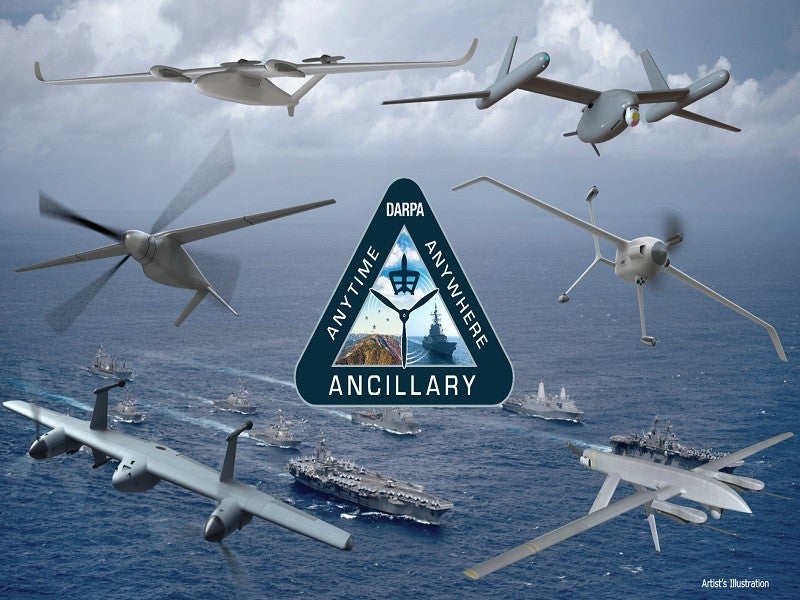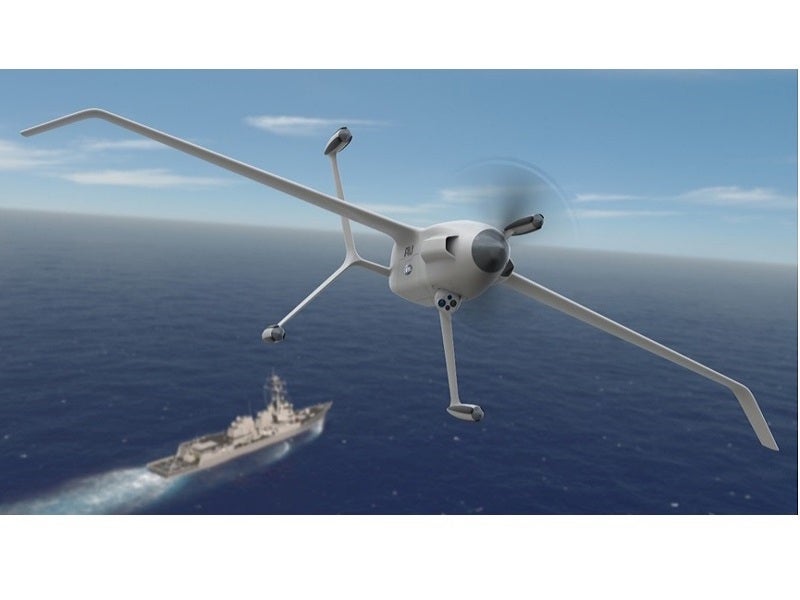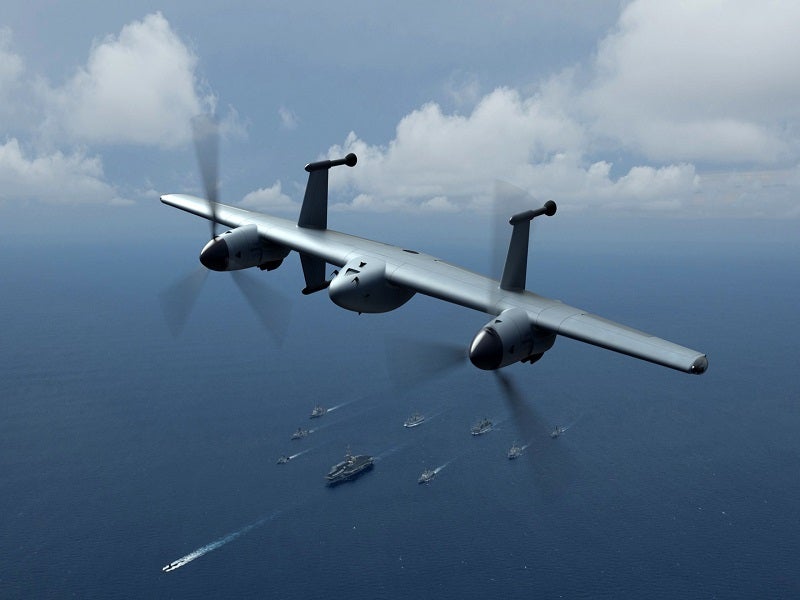The Advanced Aircraft Infrastructure-less Launch and Recovery (ANCILLARY) programme is aimed at the development and flight-testing of a ship-launched vertical take-off and landing (VTOL) uncrewed X-plane or unmanned air system (UAS).
The ANCILLARY programme is being undertaken by the US Department of Defense’s (DOD) Defense Advanced Research Projects Agency (DARPA).
It is focused on showcasing critical technologies that will drive significant advancements in long-endurance and VTOL UAS performance, without the need for traditional aircraft infrastructure for launch and recovery.
The programme will evaluate advanced propulsion technologies, advanced onboard energy storage systems such as high-density batteries or fuel cells, as well as state-of-the-art structures and manufacturing technologies to develop the UAS.
The project is expected to conclude with X-plane flight tests scheduled for early 2026.
ANCILLARY programme development
Launched by DARPA in September 2022, the ANCILLARY programme aims to address complex design goals by integrating advancements in VTOL aircraft configurations, propulsion architectures, and control theory.
Phase Ia of the ANCILLARY programme, which spanned six months, involved the investigation of conceptual designs from nine companies, both traditional and non-traditional, within the military sector.
These companies include Northrop Grumman, AeroVironment, AVX Aircraft, Griffon Aerospace, Karem Aircraft, Leidos, Method Aeronautics, Piasecki Aircraft, and Sikorsky.
In May 2024, six companies, namely AeroVironment; Griffon Aerospace; Karem Aircraft; Method Aeronautics; Northrop Grumman; and Sikorsky, moved to Phase Ib to further advance the development of their X-plane designs.
The focus during this phase will be on air vehicle design and system technology maturation over ten months. The objectives include enhancing modelling accuracy, conducting crucial subsystem testing, and addressing significant technical challenges to progress the programme.
The current developments being undertaken by the companies aim to demonstrate the efficiency and scalability of a twin proprotor rotor blown wing configuration.
Mission capabilities of ANCILLARY aircraft
The UAS developed under the ANCILLARY programme will feature a small form factor, low weight and high payload capacity. It can take off and land on ship decks and rough land sites in adverse weather conditions without the need for additional equipment, making them suitable for expeditionary missions.
The compact size of the UAS allows for multiple aircraft to be stored and operated from a single ship, creating a tactical beyond-line-of-sight (BLOS) multi-intelligence sensor network capability.
Furthermore, the UAS can take off and land vertically similar to a helicopter, conduct missions in flight like a winged aircraft, and carry a significant payload suitable for various tasks.
Additionally, the UAS will support special operations, as well as ship-to-ship and ship-to-shore logistical missions, offering cost-effective advantages for delivering essential parts and supplies.
AeroVironment Wildcat Group 3 VTOL UAS design and features
AeroVironment developed the Wildcat Group 3 VTOL UAS specifically for the ANCILLARY programme.
The 3 VTOL UAS is designed for launch and recovery from navy ships, meeting DARPA objectives such as a 450-nautical mile (nmi) mission radius, over 12 hours of endurance on station, and a 60lb payload capacity.
The Wildcat features a compact tail-sitter design, demonstrating long-range performance and the ability to handle large payloads, making it suitable for contested logistics resupply with a one-way operational range exceeding 2,000nmi.
The UAS surpasses programme objectives with a cruise speed of more than 100 knots, enabling it to cover long distances swiftly over both sea and land.
Utilising autonomy, computer vision, and advanced controllability, the Wildcat operates effectively in any environment at any time.
Northrop Grumman’s UAS for the ANCILLARY Programme
Northrop Grumman’s ANCILLARY UAS design fulfils DARPA’s performance criteria, weighing under 330lb and being deployable and retrievable without the need for special infrastructure, even during ship-based operations.
The vertical lift aircraft can be utilised for intelligence, surveillance, reconnaissance, and targeting (ISR/T) missions, leveraging AI and machine learning to enhance automated targeting capabilities.
Northrop Grumman is leveraging its expertise in autonomous VTOL systems and long-endurance aircraft, including the MQ-8 Fire Scout for ISR/T operations, as well as the RQ-4B Global Hawk and MQ-4C Triton, to develop the ANCILLARY air vehicle.
Karem Aircraft’s Bluebird aircraft details
Karem Aircraft is expected to field its Bluebird contrarotating, coaxial optimum speed tilt-rotor (OSTR) aircraft for the ANCILLARY programme. The aircraft features a carbon composite airframe, a high wing and an inverted V-tail. It is equipped with a 40hp heavy-fuel propulsion system.
The Bluebird’s rigid rotors provide powerful control capacity, enabling superior manoeuvrability necessary for shipboard operations. The aircraft also incorporates Near Earth Autonomy’s cutting-edge autonomy system, which allows for operator-free take-off and landing from naval vessels and austere sites.
Sikorsky’s vehicle for the ANCILLARY Programme
Sikorsky is testing a battery-powered vehicle.
If selected to develop an air vehicle for a future ANCILLARY phase, the company intends to create a 300lb hybrid-electric model that includes a 60lb ISR payload.






